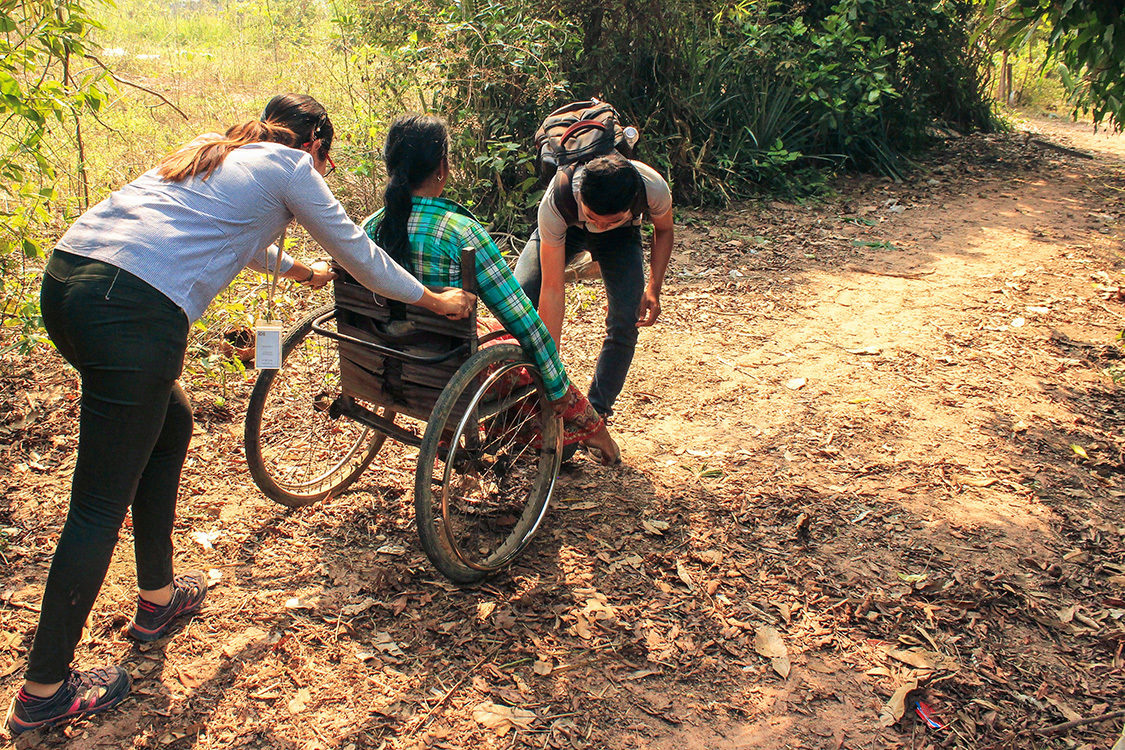Designing accessible latrines

iDE Global WASH
Learning how to accommodate disabilities while maintaining cost efficiency.
As iDE gets nearer to the goal of full sanitation coverage in Cambodia, one of the challenges we face is how to address specific market segments that remain underserved. People living with disabilities are a sizable market population in Cambodia. Up to 10% of Cambodians have a physical disability and Cambodia has minimal infrastructure to support their needs.
In 2015, iDE Cambodia started to research and design sanitation solutions that addressed the needs of those living with physical disabilities. We identified the following issues for this population:
- The entrance to the latrine needed to be ramped or ground level for wheelchair access.
- The shelter over the latrine needed to be larger to accommodate entering and maneuvering inside the shelter in a wheelchair.
- The standard floor pan was inconvenient for someone with limited leg strength.
- Shifting from wheelchair to toilet and back was difficult without internal supports to grab onto.

The iDE Cambodia team has introduced a new construction concept for the shelter using interlocking bricks that can be used to build a less expensive shelter than using conventional bricks, mortar, and plaster.
Construction also requires less effort, reduces the need for a trained mason, and reduces labor costs. This enables the shelter to be larger for a similar cost.
The bricks are capable of supporting internal handrails, which had not been possible with traditional construction, where installation tended to damage the structure.
The option of sitting toilets (which many people living with physical disabilities find more comfortable than squatting toilets) completes the new design. Fortunately, the cost of the sitting toilet is not significantly more than the chamber box, slab, and pan for a squatting toilet. However, the supply of sitting toilets remains a challenge in remote areas.
The interlocking bricks have proven so popular with both the latrine business owner and potential clients that iDE is now looking at offering it as another shelter option for any latrine buyer.